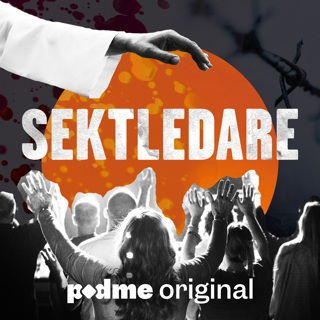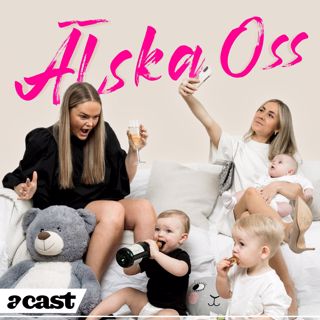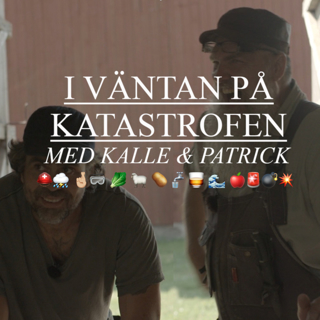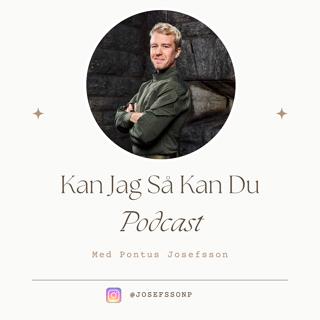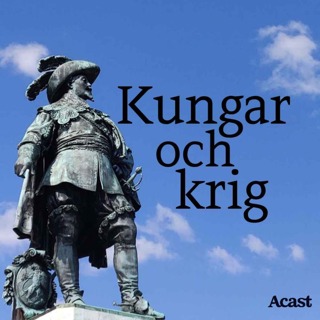
Ep. 218 Building a Skillset Outside of Training with Dr. Shamit Desai
We talk with Dr. Shamit Desai about resources and tips for endovascular and interventional specialists to continue building clinical and procedural skills beyond training. --- CHECK OUT OUR SPONSORS RapidAI http://rapidai.com/?utm_campaign=Evergreen&utm_source=Online&utm_medium=podcast&utm_term=Backtable&utm_content=Sponsor Medtronic AV DCB https://www.medtronic.com/avdata --- SHOW NOTES In this episode, host Dr. Aaron Fritts and interventional radiologist Dr. Shamit Desai discuss resources and tips for IRs to continue building clinical and procedural skills beyond residency and fellowship training. The doctors start by recognizing that every training program has specific focuses, which influence the skills that IRs have when they first emerge from the program. With the breadth of IR procedures available today, there are many service lines that are not addressed in formal training. However, Dr. Desai believes that any graduating IR has a foundation of proficient catheter skills and they have the potential to learn most image guided procedures. Dr. Desai emphasizes that a big part of building a new skill set is having the support to learn the skills and let it flourish. He recounts his path to learning how to treat kyphoplasty and PAD and the integral role that IR mentors and device companies played in helping him develop knowledge and confidence. Dr. Desai also advises listeners to branch out into reading journals from other specialties. WIth PAD, he highly recommends learning from the Journal of Vascular Surgery (JVS), which can provide valuable perspective on clinical management. We also highlight national conferences that are tailored specifically to educate on certain procedures. Additionally, Dr. Desai emphasizes that it is important for each IR to identify their true passion. Passion fuels the drive to learn as much as possible about a procedure, which leads to better outcomes for patients. It is also important to have clinical infrastructure in place before marketing the service line to patients and referrers, in order to create a quality patient experience. --- RESOURCES Ep. 198- Privademics and Advantages of Lesser Known Community Programs with Dr. Shamit Desai and Dr. Saud Ahmed: https://www.backtable.com/shows/vi/podcasts/198/privademics-advantages-of-lesser-known-community-programs Ep. 210- Modern Vertebral Augmentation with Dr. Doug Beall: https://www.backtable.com/shows/vi/podcasts/210/modern-vertebral-augmentation Vertebral Augmentation by Dr. Douglas Beall: https://www.amazon.com/Vertebral-Augmentation-Comprehensive-Vertebroplasty-Kyphoplasty/dp/1684200156 Medtronic OsteoCool System: https://www.medtronic.com/us-en/healthcare-professionals/products/spinal-orthopaedic/tumor-management/osteocool-ablation-system-rf.html Vascupedia: https://vascupedia.com/ Dr. Srini Tummala’s YouTube Channel: https://www.youtube.com/c/DrTummalasVascularChannel?app=desktop Journal of Vascular Surgery (JVS): https://www.jvascsurg.org/ SIR Y90 Course: https://www.sirweb.org/learning-center/meetings/y-90-the-complete-course/ SIR LEARN Conference: https://www.sirweb.org/learning-center/meetings/2022-learn-and-active-meeting/ AMP (Amputation Prevention) Symposium: https://www.amptheclimeeting.com/ NCVH (New Cardiovascular Horizons) Conference: https://ncvh.org/meeting/ncvh-2022/ OEIS (Outpatient Endovascular and Interventional Society) Conference: https://oeisociety.com/
24 Juni 202245min

Ep. 217 Building a Comprehensive Women’s Health Practice: Collaboration with GYN with Dr. Mark Hoffman and Dr. Merve Ozen
Dr. Merve Ozen, interventional radiologist, and Dr. Mark Hoffman, minimally invasive gynecologic surgeon (MIGS), discuss how collaboration between IR and gynecologic surgery provides comprehensive medical, surgical, and interventional treatment options for women suffering from uterine fibroids, pelvic congestion syndrome and other causes of chronic pelvic pain. --- CHECK OUT OUR SPONSORS Athletic Greens https://www.athleticgreens.com/backtablevi Medtronic AV DCB https://www.medtronic.com/avdata --- SHOW NOTES In this episode, host Dr. Aparna Baheti interviews Dr. Merve Ozen, interventional radiologist, and Dr. Mark Hoffman, minimally invasive gynecologic surgeon (MIGS) about how collaboration between IR and gynecologic surgery provides comprehensive medical, surgical, and interventional treatment options for women suffering from uterine fibroids, pelvic congestion syndrome and other causes of chronic pelvic pain. Drs. Hoffmann and Ozen began a combined clinic after a discussion between their two departments. Though IRs were enthusiastic about performing uterine fibroid embolization (UFE), they were not able to due to a lack of referring gynecologists. Dr. Hoffman was interested in this collaboration, and he knew a very supportive and motivated nurse who wanted to lead this initiative. He says that despite pushback from other MIGs in his department, he had a supportive department chair who allowed the project to go forward. Next, Dr. Ozen describes a day in their collaborative clinic. She begins by reviewing imaging and patients for the day, ordering new imaging if needed, and discussing patients with Dr. Hoffman. They each see their patients which takes about 45 minutes per visit due to the complexity of chronic pelvic pain and the many potential causes and contributing factors. Some patients require meeting with both physicians to discuss all options. They see four to five patients each day. Every day runs differently depending on the patients and their individual needs, but it runs smoothly due to the supportive nursing staff. Dr. Hoffman discusses medical management including birth control pills, which are often a first-line option or an option for someone who wants the least invasive treatment. He also offers hysterectomy (laparoscopic, robotic, vaginal, abdominal) for women who wish to never have more uterine bleeding, and myomectomy, with hysteroscopic myomectomy being the most minimally invasive and allowing patients to go home the same day after recovering from anesthesia. Dr. Ozen discusses UFE and treatments for other causes of pelvic pain. She does hypogastric nerve blocks for pain, ovarian vein embolization for pelvic congestion syndrome, and cryoablation for chronic pelvic pain. She has also been able to treat some unique ectopic pregnancies that Dr. Hoffman has seen, including a cervical and an abdominal ectopic pregnancy which provided lifesaving treatment without invasive surgical evacuation. --- RESOURCES BackTable Ep. 199: Advanced Minimially Invasive Pain Interventions with Dr. Prologo: https://www.backtable.com/shows/vi/podcasts/199/advanced-minimally-invasive-pain-interventions Non-surgical management of abdominal ectopic pregnancy with uterine artery embolization: https://pubmed.ncbi.nlm.nih.gov/35321265/
20 Juni 202246min

Police Presence in Medical Spaces with Dr. Jamal Jefferson
In this episode of our Health Equity Series, guest host Dr. Vishal Kumar interviews emergency medicine resident Dr. Jamal Jefferson about the presence of law enforcement in emergency rooms and challenges with patient privacy and trust in the healthcare system. The CME experience for this Podcast is powered by CMEfy - click here to reflect and unlock credits & more: https://earnc.me/1zdevF --- SHOW NOTES In this episode, guest host Dr. Vishal Kumar interviews emergency medicine resident Dr. Jamal Jefferson about the presence of law enforcement in emergency rooms and its effects on patient privacy and trust in the healthcare system. Dr. Jefferson explains the role that the emergency department plays in his community. He outlines its medical role, as well as its extension into “social emergency medicine.” This term refers to the fact that the ED can be an important access point to services that could improve social determinants of health. Overall the ED often sees community members in their most vulnerable states, and it has the opportunity to track trends in community needs. Next, the doctors discuss how healthcare providers can be unknowingly complicit in further injustices to their patients. Dr. Jefferson urges physicians to think about the ramifications of their actions. For example, using a 5150 code to place a patient on psychiatric hold could affect court decisions and child custody outcomes in the future. Furthermore, when patient belongings are being itemized in a public space such as the ED, this routine procedure could trigger a downstream search/seizure, interrogation, and detainment of the patient. Dr. Jefferson emphasizes the importance of being an active participant in protecting patient privacy. In his patient encounters, he separates the police from the doctor-patient relationship and dispels the idea that the medical team will report protected health information to the police. He explicitly lets patients know that the preceding events that brought them to the hospital do not have an impact on how he will treat them. Additionally, the negative experience of a single patient will send a ripple effect through the community. The patient’s friends and family members may trust the ED less, which delays care and increases morbidity and mortality. Finally, the doctors highlight important research and court rulings over the criminalization of patients. --- RESOURCES A National Evaluation of the Effect of Trauma-Center Care on Mortality: https://www.nejm.org/doi/full/10.1056/nejmsa052049 Police Brutality and Black Health: Setting the Agenda for Public Health Scholars: https://www.ncbi.nlm.nih.gov/pmc/articles/PMC5388955/ Policing the Emergency Room (Harvard Law Review): https://harvardlawreview.org/2021/06/policing-the-emergency-room/ Weapons Use Among Hospital Security Personnel: https://cdn.ymaws.com/www.iahss.org/resource/collection/48907176-3B11-4B24-A7C0-FF756143C7DE/2014_Weapons_use_among_hosptial_security_personnel.pdf Ferguson vs. Charleston: https://supreme.justia.com/cases/federal/us/532/67/ #WhiteCoatsForBlackLives — Addressing Physicians’ Complicity in Criminalizing Communities: https://www.nejm.org/doi/full/10.1056/NEJMp2023305
17 Juni 202244min

Ep. 216 Stick It — Glue Embo with Dr. Ziv Haskal
In this episode, host Dr. Aparna Baheti interviews interventional radiologist Dr. Ziv Haskal about the use of glue in peripheral applications. They discuss how to prepare and inject glue for portal vein embolization, type 2 endoleaks, and Dr. Haskal’s glue bullet technique. --- CHECK OUT OUR SPONSOR RADPAD® Radiation Protection https://www.radpad.com/ --- SHOW NOTES Dr. Ziv Haskal talks us through the use of glue in peripheral applications. He discusses how to prepare and inject glue for portal vein embolization, how to do the same for type 2 endoleaks, and also shares his glue bullet technique. Glue is only approved for neurointerventional procedures in the US, though there are many off-label uses where glue is the superior embolic. The benefit of glue is the power it gives to the operator. By manipulating the oil to glue ratio and thus the viscosity, the operator has control of how far the glue will travel when injected which makes it a very versatile liquid embolic. Dr. Haskal commonly uses glue for portal vein, bronchial, lumbar and intercostal embolizations as well as in coagulopathic patients. Dr. Haskal advises that one of the easiest places to start using glue is portal vein embolization. To prepare glue for a procedure, Dr. Haskal separates it from the rest of the back table, and always uses new gloves and a separate set of equipment. For a portal vein embolization, Dr. Haskal runs a microcatheter paraxially alongside the safety wire and makes U-turns into portal vein branches that he is targeting. For treating renal pseudoaneurysm or for finishing a coil embolization, Dr. Haskal uses the glue bullet method, which involves loading a syringe with dextrose and only a tiny amount of glue at the top of the syringe. Regarding complications of glue, Dr. Haskal says that though many fear the glue solidifying and causing the catheter to get stuck in a vessel, the likelihood of this is near zero because the glue does not harden fast enough for this to happen. The most common complication is over embolization and downstream spillage, which can be problematic in end organ supply vessels. Finally, Dr. Haskel explains his technique for when the glue starts solidifying around the catheter which creates a glue tail catheter is drawn back. --- RESOURCES Glue for Type 2 Endoleak: https://www.jvir.org/article/S1051-0443(18)30849-2/fulltext Global Embolization and Symposium Technologies (GEST): https://www.gestweb.org
13 Juni 202233min

Ep. 215 Radiologist as Spine and Pain Specialist with Dr. John Michels
Jacob Fleming interviews interventional pain specialist and former Super Bowl champion John S. Michels about his journey into the subspecialty, pathways for getting involved in interventional pain management, and his philosophy on comprehensive patient care. --- CHECK OUT OUR SPONSOR RADPAD® Radiation Protection https://www.radpad.com/ --- EARN CME Reflect on how this Podcast applies to your day-to-day and earn AMA PRA Category 1 CMEs: https://earnc.me/1DSmJG --- SHOW NOTES In this episode, host Dr. Jacob Fleming interviews interventional pain specialist and former Super Bowl champion Dr. John Michels about his journey into the subspecialty, pathways for getting involved in interventional pain management, and his philosophy on comprehensive patient care. Dr. Michels describes his first career as an NFL player with the Green Bay Packers and how it taught him to be comfortable with external pressures and delayed gratification. He recounts the knee injury that led to an early retirement from the field, as well as interactions with radiologists, surgeons, and rehabilitation specialists that got him thinking about entering the field of medicine. He ended up pursuing a diagnostic residency at Baylor University, and then an additional interventional pain fellowship at the University of California at Irvine. Throughout his training, he recognizes that there is great synergistic benefit when specialists team up to provide multidisciplinary care and teach each other different skills. For example, he refined his physical exam skills by working with a PM&R physician, and he also taught other physicians how to read imaging. Dr. Michels believes that the most gratifying part of his career is the opportunity to diagnose, treat, and follow up with patients. In his Dallas-based independent OBL, he splits his time between clinic and procedural days. He enjoys seeing the impact that his interventions have on patients, and he is committed to providing alternatives to opioid use. Dr. Michels encourages more radiologists to explore the field of interventional pain, which is now recognized as a radiology subspecialty by the American Board of Radiology. Overall, when imaging is combined with physical examination and history-taking, the patient will enjoy the benefits of better diagnosis and care. --- RESOURCES Dr. John Michel’s Website: https://www.johnmichelsmd.com/ Interventional Spine & Pain: http://www.spinedallas.com/ ABR Pain Medicine Subspecialty: https://www.theabr.org/radiation-oncology/subspecialties/pain-medicine UC Irvine Pain Fellowship: https://anesthesiology.uci.edu/education-fellowships-pain-medicine.shtml
10 Juni 202259min

Ep. 214 Building a GAE Practice in the OBL with Dr. David Wood
Dr. David Wood, interventional radiologist and chief medical officer of Advantage IR, tells us about his experiences with geniculate artery embolization (GAE) practice building in the office-based lab (OBL). --- CHECK OUT OUR SPONSOR Athletic Greens https://www.athleticgreens.com/backtablevi --- EARN CME Reflect on how this Podcast applies to your day-to-day and earn AMA PRA Category 1 CMEs: https://earnc.me/oIF49Q --- SHOW NOTES In this episode, host Dr. Michael Barraza interviews Dr. David Wood, interventional radiologist and chief medical officer of Advantage IR, about building office based labs (OBLs), the untapped potential of the geniculate artery embolization (GAE) market, and how to build patient referrals for new OBLs. We begin by discussing why Dr. Wood chose to do geniculate artery embolization (GAE) in his OBLs. He says that GAE makes a great procedure for an office setting because it is relatively easy, only requiring a C arm with digital subtraction angiography (DSA). It is also a quick procedure with little side effects and low rates of complications. He says that patients who get GAE are a unique patient population because they know they have arthritis, and have exhausted conservative measures or declined treatment options that they have been offered, which are often quite invasive. Dr. Wood says his GAE patients are mostly self-referred. He has marketing liaisons for local clinics, but what he has found most effective is TV commercials in English and Spanish, because this reaches the populations that need the most help. His patient population for GAEs consists mostly of self referred patients, as well as referrals from PCPs and occasionally orthopedic or sports medicine providers. Regarding how Dr. Wood evaluates which patients to treat, he says that he began by using the point of maximal tenderness as described by Sandeep Bagla and required MRI before patient selection. He now uses primarily X-ray and only treats pain rated at least 5 out of 10. He does not do GAE in patients who have had knee surgery or with a history of significant PAD or calcification seen on preoperative X-ray. He generally tells patients they can expect up to a 70% improvement of pain after geniculate artery embolization. --- RESOURCES BackTable Ep. 27: Geniculate Artery Embolization for OA with Dr. Sandeep Bagla and Dr. Ari Isaacson https://www.backtable.com/shows/vi/podcasts/27/geniculate-artery-embolization-for-osteoarthritis BackTable Ep. 85: Genicular Artery Embolization for OA with Dr. Jafar Golzarian https://www.backtable.com/shows/vi/podcasts/85/genicular-artery-embolization-for-oa Bagla GAE Publication: https://pubmed.ncbi.nlm.nih.gov/31837946/ Padia GAE Publication: https://www.ncbi.nlm.nih.gov/pmc/articles/PMC8542160/
6 Juni 20221h 7min

Ep. 213 Building an OBL Within an IR/DR Group with Dr. Don Garbett and Dr. Nicholas Petruzzi
Dr. Aparna Baheti talks with Nicholas Petruzzi and Donald Garbett about their experiences in building an office-based lab (OBL) within their existing IR/DR practices. Learn how they campaigned and collaborated to get their colleagues on board, and the unique challenges of building and operating an OBL. --- CHECK OUT OUR SPONSOR Boston Scientific Nextlab https://www.bostonscientific.com/en-US/nextlab.html?utm_source=oth_site&utm_medium=native&utm_campaign=pi-at-us-nextlab-hci&utm_content=n-backtable-n-backtable_site_nextlab_1&cid=n10008040 --- SHOW NOTES In this episode, host Dr. Ally Baheti interviews interventional radiologists Dr. Nick Petruzzi and Dr. Don Garbett about their own experiences with pitching and building an office-based lab (OBL) within their existing practices. First, each doctor describes how they arrived at the idea of an OBL. For Dr. Garbett, the main motivation was a drive to follow up with patients. On the other hand, Dr. Petruzzi was frustrated by the lack of adequate equipment and bureaucratic steps that his hospital required him to follow to request more equipment. Next, we shift to a discussion about how each of them got their practice partners to philosophically and financially buy into the OBL idea. Both doctors wrote and presented pro formas to delineate the net benefits. Additionally, Dr. Petruzzi proved that an OBL would be profitable by doing a few cases with trial periods for different C-arms. Dr. Garbett worked with his practice’s revenue cycle manager and accountant to verify his financial projections. Both emphasize the importance of group culture and the value of colleagues who are open-minded to expansion. Finally, we talk about unforeseen obstacles that have risen on their OBL journeys so far. Dr. Petruzzi describes his conversations with hospital systems, in which he had to advocate for IRs to be listed as referring doctors. Dr. Garbett cites concerns about billing and coding, which can be very complex for a third-party group to handle. We end with updates from each guest about the current status of their OBL and their next steps. --- RESOURCES Vascular Institute of Atlantic Medical Imaging: https://www.vi-ami.com/ Radiology Associates: https://www.rapc.com/
3 Juni 202250min

Ep. 212 New Tools to Treat Severe Distal Femoropopliteal Disease with Dr. John Rundback
In this episode, host Dr. Sabeen Dhand interviews Dr. John Rundback, interventional radiologist, about distal femoropopliteal disease, including the unique pathophysiology of this area, which stents work best at the adductor canal and the trifurcation, and tips for early operators. --- CHECK OUT OUR SPONSOR Veryan BioMimics 3D® Vascular Stent System https://www.veryanmed.com/usa/products/biomimics-3d-vascular-stent-system/ --- SHOW NOTES In this episode, host Dr. Sabeen Dhand interviews Dr. John Rundback, interventional radiologist, about distal femoropopliteal disease, including the unique pathophysiology of this area, which stents work best at the adductor canal and the trifurcation, and tips for early operators. We begin by discussing peripheral arterial disease (PAD) pathophysiology, specifically in the challenging areas around the adductor canal (Hunter’s canal). Dr. Rundback describes how the femoral artery has twists and turns around this area and that it can experience compressive forces up to 15-20% during motions such as flexion of the knee. Due to this being the most dynamic location of the femoral artery, this is often where plaque rupture will happen, resulting in critical limb ischemia (CLI) and requiring urgent intervention. The two discuss how traditional rigid stents do not work well in this area due to the dynamic nature of the region and the fact that the artery is tortuous and can cause rigid stents to fracture or cause intimal hyperplasia due to turbulent flow. Drug coated balloon (DCB) angioplasty generally does not work for this region due to poor durability. They discuss the utility of the Tack device, a scaffold with minimal metal which is better suited for focal dissections. Dr. Rundback emphasizes the importance of intravascular ultrasound (IVUS) during all distal femoropopliteal cases due to the complexity of the region and patient-to-patient variation. He uses IVUS to choose which device and what size to use because measuring on angiography is not accurate in these cases. Finally, they discuss the Supera and BioMimics stents, including the indications, benefits, and ease of deployment of each. Dr. Rundback says that Supera, a woven nitinol stent, gives it the benefit of thermal memory. The difficulty with this stent is the need for aggressive vessel preparation and plaque modification, generally requiring lengthy angioplasty and possibly atherectomy. The BioMimics stent can rotate, curve, and shorten, which is optimal for this region to maintain swirling or helical blood flow rather than causing turbulent flow. The BioMimics stent is also very easy to deploy, and Dr. Rundback generally chooses this stent in locations where he can’t adequately prep the vessel. --- RESOURCES BioMimics 3D stent: https://www.veryanmed.com/international/products/biomimics-3d-vascular-stent-system/ Supera™ Stent: https://www.cardiovascular.abbott/int/en/hcp/products/peripheral-intervention/supera-stent-system/overview.html Tack device: https://www.usa.philips.com/healthcare/product/HCIGTDTCKESYSTM/tack-endovascular-system-dissection-repair-device
30 Maj 202235min






